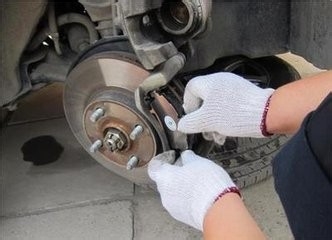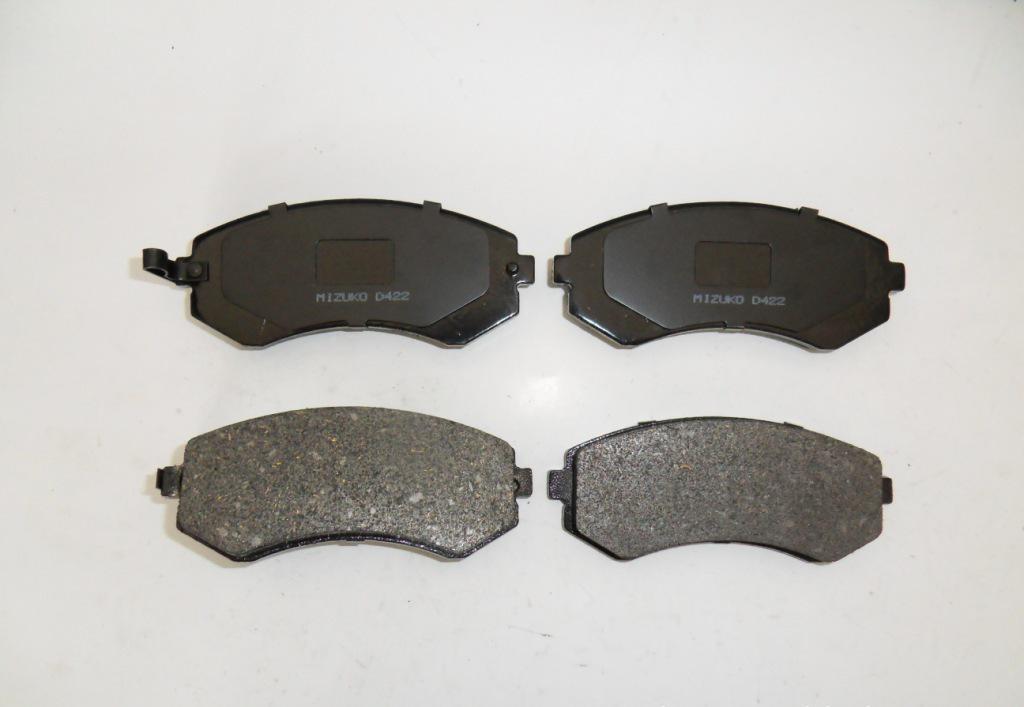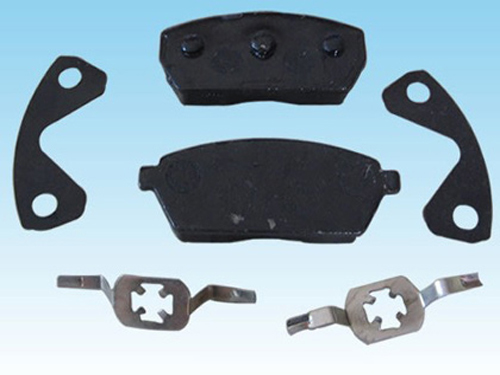 The mainBrake pad sensors for cars
The mainBrake pad sensors for cars
Seek development with good faith, win market with quality

 The mainBrake pad sensors for cars
The mainBrake pad sensors for cars
Seek development with good faith, win market with quality

Contact us
Mobile phone: 86 13805623280
Fax: 86 0563-4187699
Contact person:Muse Wang
Email address: muse@xianhaosensor.com
Address: Dushan Road, Ningguo Economic and Technological Development Zone, Anhui Province
The car is one of the most important means of transportation in our daily life. The car is of great significance to us. Because cars can help us accomplish a lot of things, so that we can better solve problems quickly. But do you know anything about cars? Like this question does a car brake pad change the front wheel is everybody important? Today xiaobian for you to introduce it.
How often do you need to change the brake pads

Every car is not the same, the general front brake change twice after the brake change once. Brake pad: generally the first replacement can be considered in 60,000-70,000 km replacement, the specific also depends on your driving habits and use environment. Some vehicles have alarm lights (usually with high gears) that alert you to the need to replace the brake pads. Or when the friction material on the brake pads has worn off to the steel back warning line, you'll hear a clamor that's when it needs to be replaced immediately. Generally, the brake pad will become soft after severe wear and tear. You can understand that it is necessary to check the brake pad for such a phenomenon. Brake disc: can consider to change 2, 3 times brake disc will change a brake disc, general no problem, brake disc need not replace.
Do you change the front wheel with the brake pads

Yes, although the front and back of the brake pads of a car are different, they are changed together.
Extension materials:
Brake pad is the most critical safety part, all the brake effect is the brake pad plays a decisive role, so a good brake pad is the protection of people and cars. We should always check the brake pads to see if they need to be replaced.
It should be noted that the brake drum is equipped with brake shoes, but the general people called brake shoes refers to brake shoes and brake shoes, so with "disc brake shoes" to specifically specify the disc brake shoes. It's not a brake disc. Brake pads produced by regular manufacturers, with license number, specified friction coefficient, and implementation standards, etc., should be selected, and there should be a certificate, production batch number, production date and so on in the package box; Next, choose professional maintenance point to ask professional personnel to install.
Do you change the front wheel of a car brake pad

The working principle of the brake is mainly from friction, which USES the friction between the brake pad, brake disc (drum) and tires and the ground to convert the kinetic energy of the vehicle moving into the heat energy after friction to stop the vehicle. A good and efficient braking system must provide stable, sufficient and controllable braking force and have good hydraulic transmission and cooling capacity to ensure that the driver's force from the brake pedal can be fully and effectively transmitted to the main pump and the sub-pump, and to avoid high heat caused by hydraulic failure and brake decline. There are two types of brakes, disc and drum, but despite the cost advantage, drum brakes are far less efficient than disc brakes.
friction
"Friction" refers to the resistance to motion between the contact surfaces of two relatively moving objects. The magnitude of friction (F) is directly proportional to the product of the friction coefficient () and the positive pressure (N) in the vertical direction on the friction force surface, expressed by the physical formula as: F= N. For the brake system, () is the friction coefficient between the brake pads and the brake disc, and N is the Pedal Force exerted by the brake caliper piston. The greater the coefficient of friction generated by friction, but the brake pads and the disc will be because of the friction coefficient of friction between the heat generated by the change, that is to say, the coefficient of friction (mu) is along with the change of temperature change, each kind of brake pad because of different materials and different friction coefficient variation curve, so the best work in different brake pads have different temperature, and the suitable operating temperature range, this is when the choose and buy brake pad must be known.
Transmission of braking force
Pedal Force is the Force exerted by the brake caliper piston on the brake pad. After the driver's force on the brake pedal is amplified by the lever of the pedal mechanism, the power Boost takes advantage of the vacuum pressure difference and amplifies the force to push the brake master pump. The hydraulic pressure issued by the brake master pump USES the incompressible power transfer effect of the liquid through the brake tubing to each sub pump, and the use of "PASCAL's principle" to amplify the pressure, push the piston of the sub pump to apply force to the brake pad. "Pascal's Law" means that the pressure of a liquid is the same anywhere in a closed container.
Pressure is obtained by dividing the applied force by the stressed area. Under the condition of equal pressure, we can change the proportion of the applied and stressed area to achieve the effect of power amplification (P1=F1/A1=F2/A2=P2). Used in the brake system, the ratio of total pump and sub pump pressure is the ratio of total pump piston area and sub pump piston area.
Equipped with: ABS.
ABS: Anti-lock Brake System. It is well known that the greatest braking effect occurs at the moment before the tyre is locked. If the braking force is kept in balance with the friction of the tyre, the greatest braking effect will be achieved. When the brake braking force than the friction of the tire will cause the tire lock, once the tire lock then the friction between the tire and the ground by the "static friction" into "dynamic friction", not only the friction greatly reduced more will lose the steering tracking ability. Because the tire lock is the brake braking force and the tire and the ground friction comparison result, that is to say, the limit of the tire lock between the car is the tire itself characteristics, road conditions, positioning Angle, tire pressure, suspension system characteristics and "at any time". ABS is equipped with the speed sensor on four wheels to determine whether the tire is locked or not, eliminate the uncertain factors of human senses, accurately control the timely release of the hydraulic pressure of the brake sub pump, to achieve the purpose of preventing the brake lock. At present, ABS mostly adopts the design of 12~60 times of continuous pedaling per second (12~60Hz), which is already a super high level performance compared with the top professional racing drivers' 3~6 times. The higher the frequency of pedaling, the more the brake braking force can be maintained near the edge of the limit. The accuracy and reliability ABS can achieve is beyond the limits of human beings, so we say ABS is the excellent quality and reasonable price when buying a car. This is especially true for the air-bag's relative danger.
ABS questions
Recently, there have been a lot of reports that cars equipped with ABS are more likely to have an accident than those without ABS, which has caused many people to question the efficacy of ABS. This is caused by the general owners' insufficient knowledge of the brake system and ABS. Many people mistakenly assume that ABS can improve the limit of brake braking force or tire and ground friction. In fact, ABS can maintain the maximum limit of brake braking force as far as possible, but it cannot improve the limit. Here to reiterate: the tire and the ground friction limit is determined by the characteristics of the tire itself, road conditions, positioning Angle, tire pressure, suspension system characteristics, but not ABS. ABS gives full and effective play to the braking system's capabilities, but does nothing to improve braking force or friction. In addition, when using ABS to dodge at high speed in an emergency, please remember to slow down in a straight line before turning the steering wheel. Do not release the brake pedal when turning the steering wheel, and do not panic because of the ABS feedback from the pedal. There are also a lot of people think ABS have to stomp on the brakes to be effective, which is another false cognition of ABS. Of course, antilock brakes work only when the wheels are locked. If you're driving down an icy road, the ABS may not stop as long as you tap the brakes. And if you switch to a set of large, hot-melt tires with superior grip on flat, dry roads, and if your braking system is not reinforced, you may be able to press as hard as you can on the brake pedal and the ABS won't move because your braking force isn't enough to lock the tires. If car manufacturers can make sufficient and effective information on the above two points when selling ABS to consumers, then ABS can truly become an "active safety" device. Otherwise, the probability of causing an accident may increase rather than decrease when consumers have the confidence to hit the brakes.
Brake modification
Review before modification: An efficient braking system is a must for road cars and racing cars. A comprehensive review of the original brake system must be made before the brake is modified. Check brake master pump, distributor pump and brake tubing for signs of oil seepage. If any suspicious traces must be traced to the bottom. If necessary, replace the faulty distributor pump, distributor pump or brake pipe or brake pipe. The most important factor affecting the stability of the brake is the flat surface of the disc or drum, which is often the reason for the abnormal sound or unbalanced brake. For disc brake systems, the surface must not be fraying grooves, and the thickness of the left and right discs must be the same to obtain the same distribution of braking force, and the discs must be protected from lateral impact. Disc and brake drum balance can also seriously affect the wheel balance, so if you want excellent wheel balance, sometimes you have to put the tires into dynamic balance.
Brake fluid
The most basic modification of the brake system is to replace it with high-performance brake oil. When brake oil degrades due to high temperature or absorbs moisture from the air, the boiling point of brake oil decreases. Boiling brake oil can cause the brake pedal to empty, which can happen suddenly when the brakes are applied heavily, frequently and continuously. Boiling brake oil is the biggest problem facing the brake system. The brake must be replaced regularly, and the bottle mouth must be sealed to prevent moisture in the air from coming into contact with the brake oil when stored after opening. Some vehicles may limit the brand of brake oil used, because some brake oil can erode rubber products. Please refer to the warning in the user's manual to avoid misuse, especially when using brake oil containing silicone. It is more important not to mix different brake oils. Brake fluid should be replaced at least once a year for general road vehicles and after every race for racing cars.
Brake pads
High-performance brake pads are the most direct, effective and simple way to improve brake braking force. Currently, most high-performance brake pads are made of carbon fiber and metal, with an emphasis on asbestos-free, environmentally friendly formula. Because of the brake pad Know - How is the material formula so consumers do not learn from product labeling in the actual material, so the choice of brake pad in addition to the manufacturer provides the coefficient of friction temperature curve and the suitable operating temperature (if any) as the basis for outside, only can use tips from a professional media test report or as a reference. There are car owners who misuse pure racing brake pads and pay a high price to get worse braking effect than the original brake pads. The reason is that its gentle driving way makes the brake pads fail to reach the most basic working temperature all the time, so the effect is of course poor. The most common problem with brake pads is the accompanying noise. If the disc is flat, there is no solution. Either accept it or change it.
The brake pipe
The general brake system will have a section of material is soft rubber hose, used to cooperate with the suspension activities, but the rubber itself is elastic, bear the hydraulic pressure of the brake system will produce deformation, causing pipe diameter change, reduce the transmission effect of the brake oil hydraulic, so that the brake pump can not produce a stable brake force. Such a situation can increase the degree of deformation with the life of the brake system and the extreme operation of the brake system. Metal tubing that can withstand high pressures and temperatures, originally used in aircraft hydraulic systems, could improve the situation. The inner part is made of teflon, and the outer part is covered with metal snake tube, which is not easy to produce deformation. It provides excellent hydraulic transmission effect, so that the hydraulic pressure from the brake master pump can be used to push the piston completely and provide stable braking force. In addition, the metal material also has the characteristics of non-breakage, which can greatly reduce the probability of brake failure caused by tubing damage. Brake tubing is a necessary retrofit for motor racing (RALLY racing in particular) and a different kind of safety guarantee for road cars in general.
Increase brake pedal force
If you squeeze the brakes hard but fail to lock the tires, the pedal creates insufficient braking force, which is very dangerous. A car with too low a brake force loses track control, even though it still locks when pressed too hard. The brake limit is the moment before the brake is locked, and the driver must be able to keep the brake pedal under control. To increase the brake pedal force, the first step is to increase the brake power assist and change the larger air-tank. However, the increase is limited, because the excessively increased vacuum assist force will cause the brake to lose its gradual phase, and the brake will hit the bottom as soon as it is pressed. In this way, the driver cannot effectively and steadily control the brake. The ideal is to refit the general pump and sub pump, using the further use of PASCAL's principle to improve the brake pedal force. Refit the pump and jig can be combined with the increase of the size of the disc, braking force is the friction force generated by the brake pad on the wheel and axle of the force distance, so the greater the diameter of the disc produced the greater the braking force.
Brake cooling
Excessive temperature is a major cause of brake pad decay, so brake cooling becomes particularly important. For disc brakes the cooling air should be blown directly into the clamp. Because the brake decay is mainly due to the boiling of brake oil in the jig, if the cooling air can be channeled into the jig through proper piping or through specially designed rings while driving. In addition, the heat from the saucer and clamp can be partially Shared if the rim itself has a good cooling effect. Drawing lines, drilling holes or ventilated discs can maintain a stable braking effect and avoid the sliding effect caused by hot iron chips between the brake pads and discs, effectively ensuring braking force.
The coefficient of friction
The most important performance index of brake pad is the coefficient of friction. The friction coefficient of the brake stipulated by the national standard is between 0.35 and 0.40. The friction coefficient of qualified brake pads is moderate and stable. If the friction coefficient is lower than 0.35, it will exceed the safe braking distance and even the brake will fail. If the friction coefficient is higher than 0.40, the brake is easy to be suddenly locked and there will be a rolling accident.
Inspector of National Non-metallic Mineral Products Quality Supervision and Inspection Center: "The national standard stipulates that the friction coefficient of 350 degrees should be greater than 0.20.
Contact us
Mobile phone: 86 13805623280
Fax: 86 0563-4187699
Contact person:Muse Wang
Email address: muse@xianhaosensor.com
Address: Dushan Road, Ningguo Economic and Technological Development Zone, Anhui Province
Tel:

Copyright: Ningguo Xianhao Auto Parts Co., LTD. All Rights Reserved 皖ICP备10204175号
